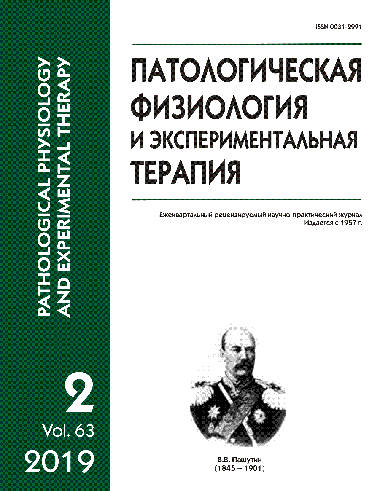Oxytocin and vasopressin in the pathogenesis of chronic pelvic pain induced by adenomyosis
Keywords:
adenomyosis, pelvic pain syndrome, oxytocin, vasopressin
Abstract
Pathogenetic mechanisms underlying the development of adenomyosis-associated pelvic pain are currently not fully understood and require a comprehensive approach in their analysis to determine the most effective diagnosis and individualized therapy. Objective. To expand the understanding of the pathogenesis of pelvic pain associated with adenomyosis. Methods. The study evaluated 30 (n = 30) biopsy samples obtained after hysterectomy from women with grade II-III diffuse adenomyosis accompanied by severe painful syndrome who received no hormonal therapy. The morphological comparison group consisted of 30 (n = 30) biopsy samples obtained from women with painless adenomyosis operated for abnormal uterine bleeding who did not receive any hormone therapy either. After hysterectomy, fragments of the uterine wall including the endometrium and myometrium were subjected to standard histological procedures with preparation of 5-μm paraffin sections. For general morphological assessment the sections were stained with hematoxylin and eosin. Nerve fibers were visualized using immunohistochemical (IHC) staining with monoclonal antibodies (Abcam, UK) to oxytocin receptors (OTR) (Anti-Oxytocin Receptor antibody, Clone ab217212, 1: 300) and polyclonal antibodies to vasopressin receptors (V1aR) (Anti-AVPR1A / V1aR antibody, Clone ab140492, 1: 200). Statistical analysis was performed using the SPSS 7.5 for Windows statistical software package (IBM Analytics, USA). In the absence of normal distribution, the non-parametric Wilcoxon test (Statistical Methods for Research Workers) was used with a significance level at p <0.05. Results. The morphometric analysis of the epithelial lining of endometrioid heterotopies did not show any significant differences in the height of glandular epithelium cells, gland diameter, and their density per unit area in groups 1 and 2 (p>0.05). The total density of OTR immunological labeling in foci of the adenomyotic lesion was 73.7 ± 1.8% vs. 35.2 ± 1.4% in the morphological control group (p <0.05), which indicated a significant effect of oxytocin as a ureterotonic (uterotonic?) peptide enhancing nonperistaltic contractions of the myometrium and local vasoconstriction in adenomyosis. In the cytoplasm of smooth muscle cells (SMC) of all myometrium layers and blood vessels, a moderate (score 2), sometimes pronounced (score 3) IHC response to V1aR (88.4 ± 2.3%) was found. In contrast, in the morphological control group, a moderate (score 2) IHC response to V1aR (43.2 ± 1.8%, p <0.05) was observed in SMC cytoplasm in all layers of the myometrium and blood vessels. Conclusions: As distinct from painless diffuse adenomyosis, the pathogenesis of adenomyosis-associated pelvic pain is based on increased activities of the ureterotonic (uterotonic?) factors, oxytocin (OTR, 2.5 times – 92.2 ± 2.1% vs. 36.3 ± 2.4%, p <0.05) and vasopressin (V1aR, 2.05 times – 88.4 ± 2.3% vs. 43.2 ± 1.8%, p <0.05) in the myometrium, which induces spontaneous, nonperistaltic contractions of spastic myometrium associated with increased expression of their receptors in the pattern under study.Downloads
Download data is not yet available.
Published
27-05-2019
How to Cite
Orazov M. R., Radzinskiy V. Y., Lokshin V. N., Khamoshina M. B., Gasparov A. S., Dubinskaya E. D., Kostin I. N., Demyashkin G. A., Toktar L. R., Lebedeva M. G., Tokaeva E. S., Сhitanava Y. S., Minaeva A. V. Oxytocin and vasopressin in the pathogenesis of chronic pelvic pain induced by adenomyosis // Patologicheskaya Fiziologiya i Eksperimental’naya Terapiya (Pathological physiology and experimental therapy). 2019. VOL. 63. № 2. PP. 99–107.
Issue
Section
Original research






